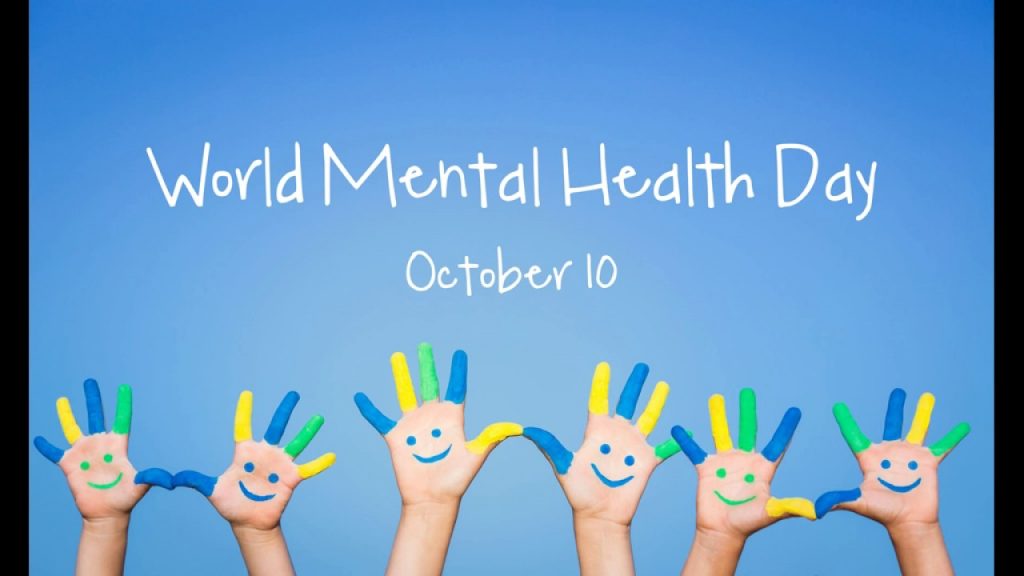During our adult lives, a large proportion of our time is spent at work. Our experience in the workplace is one of the factors determining our overall well being. Employers and managers who put in place workplace initiatives to promote mental health and to support employees who have mental disorders see gains not only in the health of their employees but also in their productivity at work. A negative working environment, on the other hand, may lead to physical and mental health problems, harmful use of substances or alcohol, absenteeism and lost productivity.
Depression and anxiety disorders are common mental disorders that have an impact on our ability to work, and to work productively. Globally, more than 300 million people suffer from depression, the leading cause of disability. More than 260 million are living with anxiety disorders. Many of these people live with both. A recent WHO-led study estimates that depression and anxiety disorders cost the global economy US$ 1 trillion each year in lost productivity.
Mental health in the workplace is the theme of World Mental Health Day 2017. World Mental Health Day is observed on 10 October every year, with the overall objective of raising awareness of mental health issues and mobilizing efforts in support of better mental health.
Key facts
- Work is good for mental health but a negative working environment can lead to physical and mental health problems.
- Depression and anxiety have a significant economic impact; the estimated cost to the global economy is US$ 1 trillion per year in lost productivity.
- Harassment and bullying at work are commonly reported problems, and can have a substantial adverse impact on mental health.
- There are many effective actions that organizations can take to promote mental health in the workplace; such actions may also benefit productivity.
Overview
Globally, more than 300 million people suffer from depression, the leading cause of disability, with many of these people also suffering from symptoms of anxiety. A recent WHO-led study estimates that depression and anxiety disorders cost the global economy US$ 1 trillion each year in lost productivity. Unemployment is a well-recognized risk factor for mental health problems, while returning to, or getting work is protective. A negative working environment may lead to physical and mental health problems, harmful use of substances or alcohol, absenteeism and lost productivity. Workplaces that promote mental health and support people with mental disorders are more likely to reduce absenteeism, increase productivity and benefit from associated economic gains.
This information sheet addresses mental health and disorders in the workplace. It also covers difficulties that may be created or exacerbated by work such as stress and burnout.
Work-related risk factors for health
There are many risk factors for mental health that may be present in the working environment. Most risks relate to interactions between type of work, the organizational and managerial environment, the skills and competencies of employees, and the support available for employees to carry out their work. For example, a person may have the skills to complete tasks, but they may have too few resources to do what is required, or there may be unsupportive managerial or organizational practices.
Risks to mental health include:
- inadequate health and safety policies;
- poor communication and management practices;
- limited participation in decision-making or low control over one’s area of work;
- low levels of support for employees;
- inflexible working hours; and
- unclear tasks or organizational objectives.
Risks may also be related to job content, such as unsuitable tasks for the person’s competencies or a high and unrelenting workload. Some jobs may carry a higher personal risk than others (e.g. first responders and humanitarian workers), which can have an impact on mental health and be a cause of symptoms of mental disorders, or lead to harmful use of alcohol or psychoactive drugs. Risk may be increased in situations where there is a lack of team cohesion or social support.
Bullying and psychological harassment (also known as “mobbing”) are commonly reported causes of work-related stress by workers and present risks to the health of workers. They are associated with both psychological and physical problems. These health consequences can have costs for employers in terms of reduced productivity and increased staff turnover. They can also have a negative impact on family and social interactions.
Creating a healthy workplace
An important element of achieving a healthy workplace is the development of governmental legislation, strategies and polices as highlighted by recent European Union Compass work in this area . A healthy workplace can be described as one where workers and managers actively contribute to the working environment by promoting and protecting the health, safety and well-being of all employees. A recent guide from the World Economic Forum suggests that interventions should take a 3-pronged approach:
- Protect mental health by reducing work–related risk factors.
- Promote mental health by developing the positive aspects of work and the strengths of employees.
- Address mental health problems regardless of cause.
The guide highlights steps organizations can take to create a healthy workplace, including:
- Awareness of the workplace environment and how it can be adapted to promote better mental health for different employees.
- Learning from the motivations of organizational leaders and employees who have taken action.
- Not reinventing wheels by being aware of what other companies who have taken action have done.
- Understanding the opportunities and needs of individual employees, in helping to develop better policies for workplace mental health.
- Awareness of sources of support and where people can find help.
Interventions and good practices that protect and promote mental health in the workplace include:
- implementation and enforcement of health and safety policies and practices, including identification of distress, harmful use of psychoactive substances and illness and providing resources to manage them;
- informing staff that support is available;
- involving employees in decision-making, conveying a feeling of control and participation; organizational practices that support a healthy work-life balance;
- programmes for career development of employees; and
- recognizing and rewarding the contribution of employees.
Mental health interventions should be delivered as part of an integrated health and well-being strategy that covers prevention, early identification, support and rehabilitation. Occupational health services or professionals may support organizations in implementing these interventions where they are available, but even when they are not, a number of changes can be made that may protect and promote mental health. Key to success is involving stakeholders and staff at all levels when providing protection, promotion and support interventions and when monitoring their effectiveness.
Available cost-benefit research on strategies to address mental health points towards net benefits. For example, a recent WHO-led study estimated that for every USD $1 put into scaled up treatment for common mental disorders, there is a return of USD $4 in improved health and productivity.
Supporting people with mental disorders at work
Organizations have a responsibility to support individuals with mental disorders in either continuing or returning to work. Research shows that unemployment, particularly long term unemployment, can have a detrimental impact on mental health. Many of the initiatives outlined above may help individuals with mental disorders. In particular, flexible hours, job-redesign, addressing negative workplace dynamics, and supportive and confidential communication with management can help people with mental disorders continue to or return to work. Access to evidence-based treatments has been shown to be beneficial for depression and other mental disorders. Because of the stigma associated with mental disorders, employers need to ensure that individuals feel supported and able to ask for support in continuing with or returning to work and are provided with the necessary resources to do their job.
Article 27 of The UN Convention on the Rights of Persons with Disabilities (CRPD) provides a legally-binding global framework for promoting the rights of people with disabilities (including psychosocial disabilities). It recognizes that every person with a disability has the right to work, should be treated equally and not be discriminated against, and should be provided with support in the workplace.
WHO response
At a global policy level, WHO’s Global Plan of Action on Worker’s Health (2008-2017) and Mental Health Action Plan (2013-2020) outline relevant principles, objectives and implementation strategies to promote good mental health in the workplace. These include: addressing social determinants of mental health, such as living standards and working conditions; activities for prevention and promotion of health and mental health, including activities to reduce stigmatization and discrimination; and increasing access to evidence-based care through health service development, including access to occupational health services.
To assist organizations and workers, WHO has produced the “Protecting Workers’ Health” series which provides guidance on common issues such as harassment and stress that can affect the health of workers. As part of the Mental health Gap Action Programme (mhGAP), which provides tools for evidence-based health care, WHO’s technical instruments for early identification and management of alcohol and drug use disorders and for suicide prevention can also be useful for improving mental health in the workplace. WHO is developing and testing IT-supported self-help tools to address common mental disorders, harmful use of alcohol and psychological distress in low-and middle-income countries.


